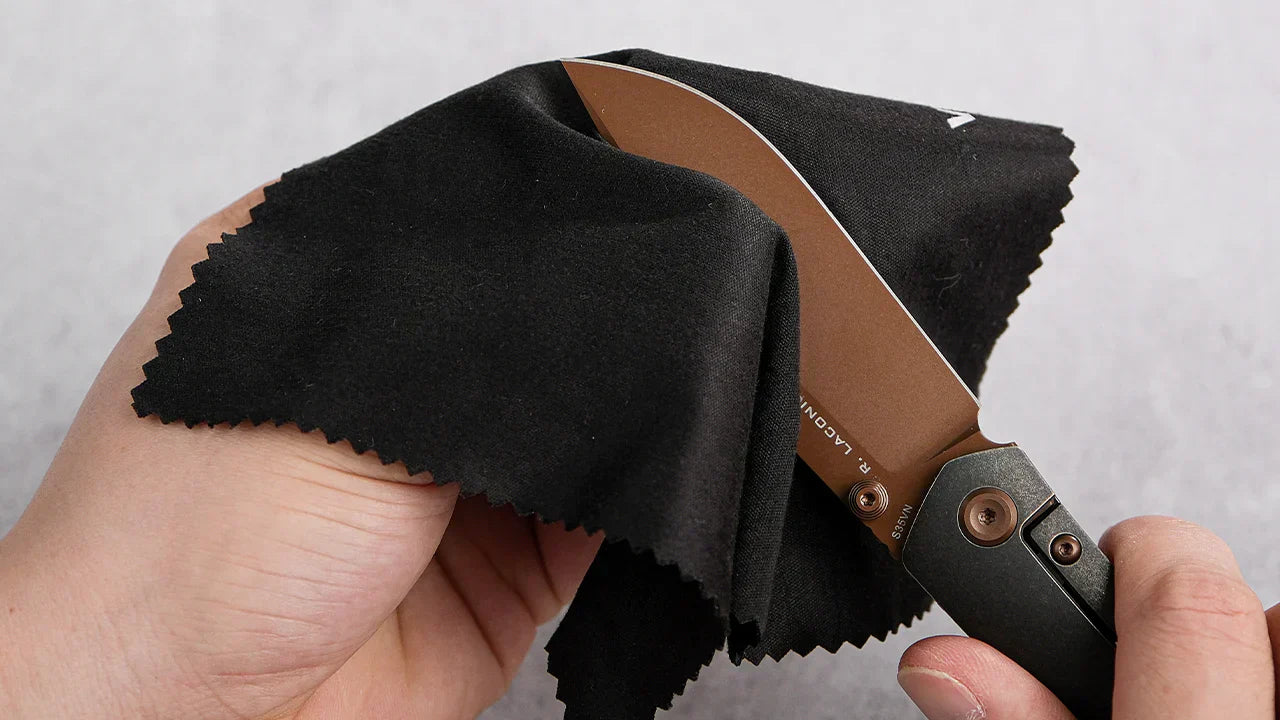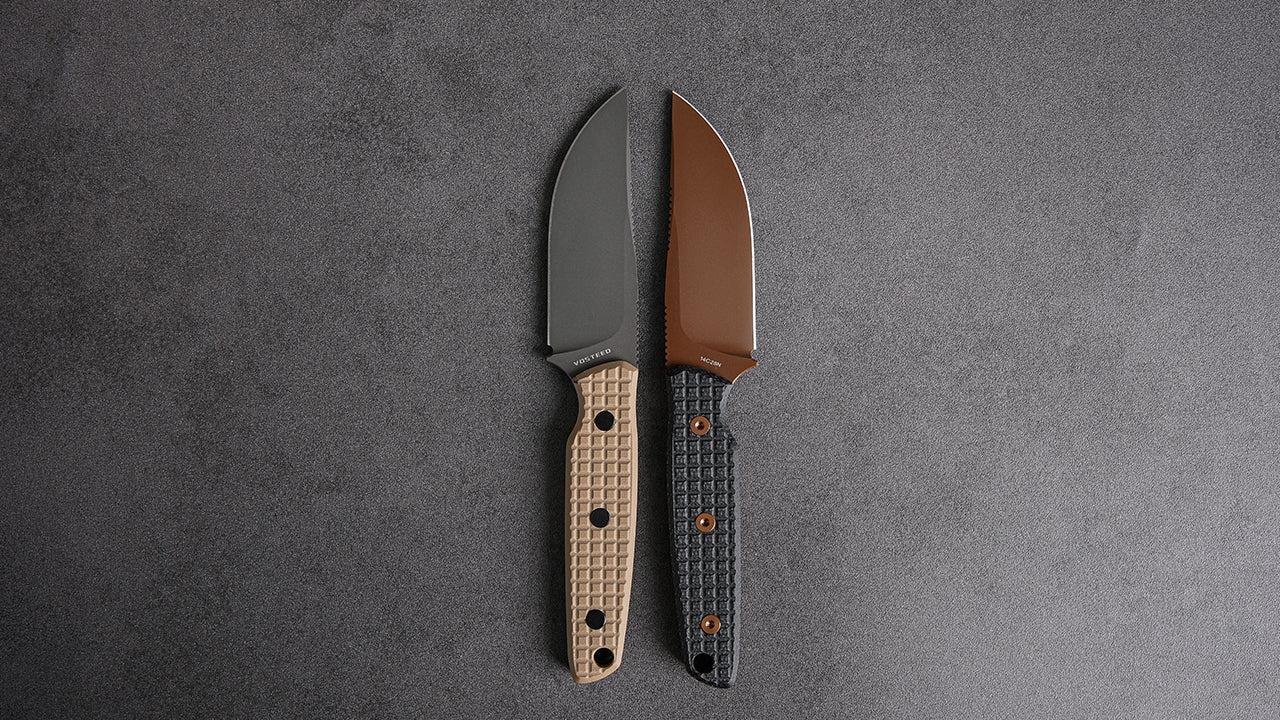Fishing is a way of life for many, not just a hobby. Whether you're fishing for fun, sport, or survival, the right gear can make all the difference. A good fishing knife is one of those necessities. A good fishing knife is less about cutting and more about precision, longevity, and comfort. In this buyer's guide, we will help you master the basics of choosing the perfect fishing knife for your needs.
Why a Fishing Knife is Essential for Every Angler
The Role of a Fishing Knife in Your Kit
A fishing knife serves a multitude of purposes and is among the most practical items in an angler's tackle box. Whether it's for cleaning fish, cutting fishing lines, or preparing bait, a good knife makes the task easier and safer. A fishing knife is not a luxury item, but rather a tool that any angler can use to enhance their angling experience. It can help make fish cleaning easier, speed up the preparation of bait and tackle, and even help with any other random issues on the water.
Key Uses – From Cleaning to Cutting Lines
The single most crucial task of a fishing knife is cleaning fish. A quality fillet knife will slice through the flesh with ease so that you can get the best out of your catch. But the utility doesn't stop there—fishing knives are also useful for cutting lines, trimming lures, and even opening packages of bait. A quality fishing knife should be capable of handling both fine detail work and heavy-duty cutting, making it an essential tool for every angler.

Different Types of Fishing Knives
Fishing knives exist in diverse shapes and sizes, each for particular tasks. Selecting the correct type of knife will depend on your needs and style of fishing.
Fillet Knives – Made for Precise Cutting
Fillet knives are made to clean fish. Fillet knives give anglers a good means of cleaning and deboning fish with their thin, flexible blade and sharp edge. The thin blade gives you a smooth, fine cut along the bones, and you're left with clean, intact fillets. A fillet knife is a valuable addition to your arsenal if you’re an angler who regularly catches fish for consumption.
Bait Knives – A Must-Have for Preparing Bait
Bait knives are also an essential tool for anglers. Bait knives are typically short and have a straight, heavy blade that's designed to cut bait. Whether you're slicing pieces of fish or cutting through squid, a bait knife will make your bait preparation quick and easy. The shorter length allows you to maneuver around fish carcasses and other tough materials easily, so it's a necessity for any angler who prepares his own bait.
General-Purpose Fishing Knives – Versatile for Multiple Tasks
For anglers needing a knife for a variety of tasks, a general-purpose fishing knife is an ideal choice. These knives are designed for a mix of cutting, slicing, and trimming. While they don't have the specialized features of a fillet or bait knife, general-purpose knives are robust and multi-functional and can handle everything from line cutting to cleaning small fish. If you prefer to keep things simple, a general-purpose knife is an excellent compromise that covers a number of tasks without a loss of quality.
Fixed vs. Folding Blades – Which is Better?
When choosing a fishing knife, you'll have to decide between a fixed blade and a folding blade. Both have their pros and cons, so let's pit them against each other:
- Fixed Blade Knives: Fixed Blade Knives are more durable and provide better strength. With no moving parts, a fixed blade knife is less likely to fail under stress. If you're fishing in tough conditions or need a sturdy knife for filleting and cutting, a fixed blade is a great option.
- Folding Blade Knives: Folding Blade knives are smaller and more compact. They are ideal for fishermen who want a light and compact storage option. A folding knife is a great choice for anyone who doesn't need a heavy-duty knife but needs something convenient for general use, like cutting fishing lines or trimming lures.
How to Choose the Right Fishing Knife
Choosing the right fishing knife means considering a number of factors:
Blade Material
Stainless steel is the most common material for a fishing knife, as it is resistant to corrosion and long-lasting. High-carbon steel blades are sharp but require special care to avoid rust. Select a blade material according to your specific fishing environment, either freshwater or saltwater.
Handle Comfort and Grip
A secure and ergonomic handle is essential for effective and safe usage. While selecting a knife, look for a handle that provides a firm grip, particularly in wet environments. Rubber, plastic, or wood with texture ensures a good hold, reducing chances of slipping.
Blade Flexibility
For fillet knives, flexibility is paramount. A readily bent blade allows you to follow the curves of the bones and skin of the fish. For all-purpose knives, you'll want a stiffer blade that will handle heavier-duty work.
Length of the Blade
A longer blade gives you more control over larger fish, and a shorter blade is more agile and better for smaller work.
Best Fishing Knives for Different Styles of Fishing
The perfect fishing knife will also depend on what kind of fishing you are doing:
Freshwater Fishing
If you fish nearly exclusively in freshwater, small fillet knives or general-purpose knives are ideal. These knives are lightweight yet strong, perfect for filleting freshwater fish like bass, trout, and pike.
Saltwater Fishing
Saltwater anglers need a knife with superior corrosion resistance. A fixed blade knife with a stainless steel or titanium blade is typically preferred for the rough environment of saltwater fishing.
Fly Fishing
Fly anglers typically need a small, lightweight knife for cutting fishing lines and fly tying. A small folder knife will suffice for the needs of a fly angler, offering convenient storage and access without bulk.
Fillet Knives vs. General Fishing Knives – What's the Difference?
While both fillet knives and general fishing knives are requirements for anglers, they do not serve the same function. Fillet knives are designed for precision work, like filleting fish. They possess thin and flexible blades that allow one to create distinct cuts along bones and skin. General fishing knives are heavier and are suitable for a variety of tasks, such as cutting bait, trimming lines, and opening packages.
Must-Have Accessories for Your Fishing Knife
To maximize your fishing knife's use and prolong its life, consider the following accessories:
Knife Sheath
A sheath is a necessity for both protective storage and easy access. Regardless of your preference for a leather, nylon, or plastic sheath, ensure that it wraps snugly around your knife.
Sharpening Tools
A sharp knife is essential for optimum use. A sharpening stone or portable sharpener will keep your knife in top shape.
Knife Lanyard
A lanyard will save you from losing your knife, especially when you are engaged in active fishing activity. It is a secure way of having your knife attached to your gear.

Proper Care and Maintenance of Your Fishing Knife
A well-maintained fishing knife will last for years of service. Wash your knife in warm water and mild soap after every use to get rid of any residue. Dry the blade thoroughly to prevent rust, especially after use in saltwater. Keep your knife in prime condition by sharpening it regularly. It's also a good idea to wipe on a thin layer of oil to prevent corrosion and to keep the blade sharp.
Typical Mistakes to Avoid When Choosing a Fishing Knife
Choosing the Wrong Blade Material
Do not choose a blade material that will not suit your fishing environment. For example, carbon steel blades can be very sharp, but they are also more prone to rusting in saltwater.
Ignoring Handle Comfort
A fishing knife with an uncomfortable handle can make fishing tasks unpleasant. Ensure your knife has an ergonomic handle that is comfortable to hold.
Underestimating Blade Length
Don't settle for a knife with a blade that's too short or too long for your needs. The right blade length makes a tremendous amount of difference in performance.

FAQs About Fishing Knives
Q1: What's the Best Blade Material for Fishing Knives?
The most popular material for fishing knives is stainless steel, as it corrodes less and is simple to clean. High-carbon steel has great sharpness but requires special care to prevent rust.
Q2: How Often Should I Sharpen My Fishing Knife?
Sharpen your fishing knife regularly for its performance. Depending on use, sharpening every few weeks or after each outing is recommended.
Q3: Can I Use a Regular Outdoor Knife for Fishing?
While an ordinary outdoor knife can be used for some fishing purposes, it is not as effective as a fishing knife. A fishing knife is more precise and offers greater control.
Q4: How Do I Safely Store a Fishing Knife?
Always store your fishing knife in a protective sheath and keep it in a dry place to prevent corrosion. A knife lanyard can also help keep your knife secure while fishing.
By considering the right blade material, handle design, and type of knife, you'll be equipped to choose the perfect fishing knife for your needs. Happy fishing!





Leave a comment
All comments are moderated before being published.
This site is protected by hCaptcha and the hCaptcha Privacy Policy and Terms of Service apply.